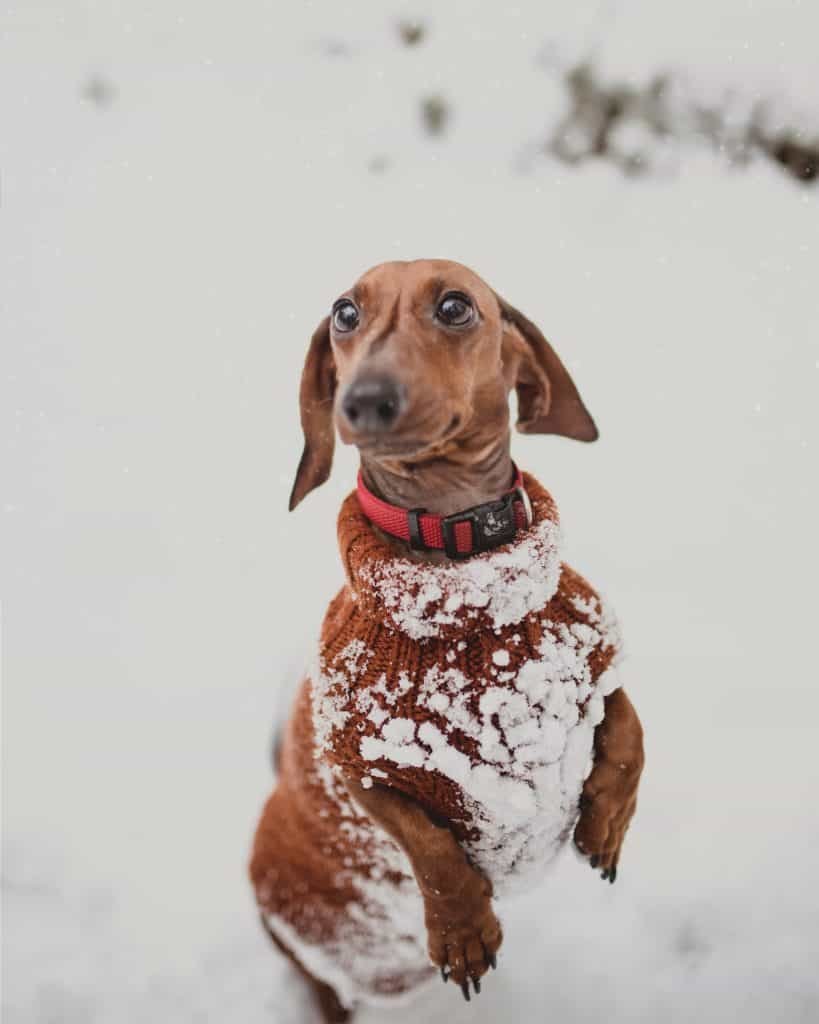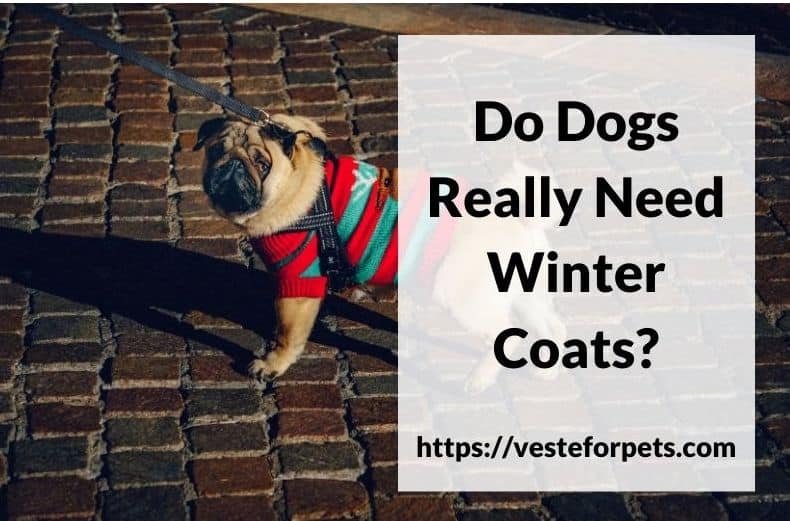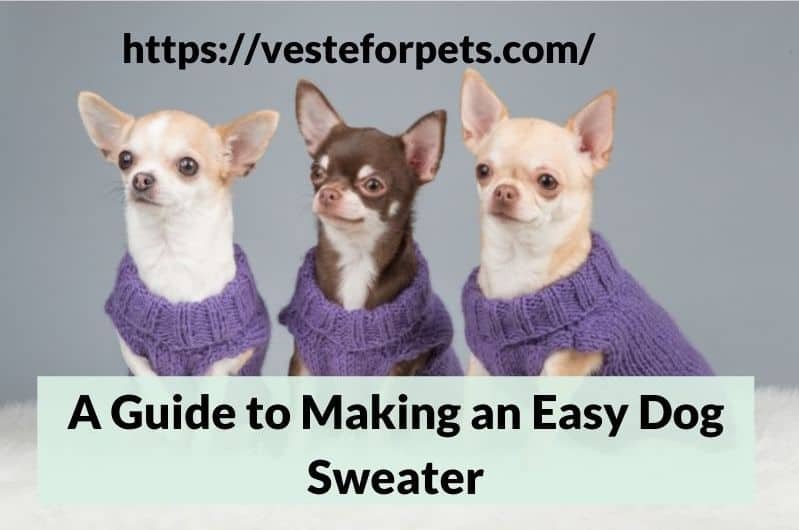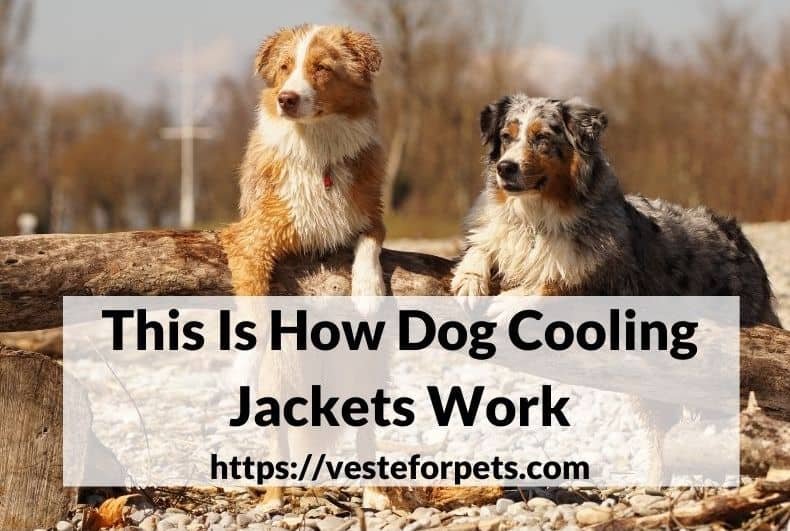Many of us have closets full of jackets and coats; they may vary in material, style, thickness, length, waterproofness, and the ability to keep us warm. We rely on them almost daily when the weather turns cold. Likewise, different dog breeds also have varying types of fur coats, but do they need more layers during the winter like we do?
Whether or not a dog needs a winter coat for additional warmth in cold temps depends on the breed, size, and physical condition of the animal. Wearing an added layer against the cold will benefit most, but not all, dogs once the temperature drops below 20 degrees Fahrenheit.
Sure, dog apparel can be a fashion statement for Fido. But if you’re wondering if your dog needs a winter coat to stay toasty warm, call your pup over, curl up on the couch, and let’s find out.
Do Dogs Really Need Winter Coats?
There isn’t a blanket answer to the question of whether or not dogs need winter coats. In fact, for some types of dogs, wearing an additional layer can actually hinder their natural ability to stay warm. It’s essential to consider the question based on the needs of your dog.
Not all dogs need a winter coat, nor can all dogs even wear one. And just like people, some dogs need outerwear since they are more cold-natured than others. Some don’t like something going over their head, while others chafe at the feel of the close-fitting fabric.
This probably makes it sound like it’s impossible to decide for sure if you need to head to a pet store to buy your pup a winter coat. Fortunately, it’s really not hard to determine what your dog needs, and we’re going to offer some things to think about as you figure it out.
Temperature and Weather Conditions Matter
Winter weather conditions vary in different parts of the country. As humans, we get acclimated to our area’s temperatures, meaning 50 degrees might give the shivers to someone in southern climates but feel balmy and pleasant to a New Englander.
Our pups are no different, so it’s essential to be aware of the weather your dog is used to and make adjustments if there is a wild swing in temperature. Pay attention to your dog’s behavior. Is he shivering? Refusing to go out? It may be too cold for him to be outside.
According to PetMD, once temperatures reach 45 degrees Fahrenheit, cold-sensitive pets may begin to feel the effects of cold. At 20 degrees, all dogs can potentially be ill-affected by the cold.
Other weather factors to consider are wind chill, dampness, and cloud cover. Any of these can create a feeling of chill for Buster even if the temp hasn’t dipped too low.
Breed Matters

Breed is a crucial component in a dog decision of any kind. It’s what sets dogs apart and gives them their unique physical characteristics. Their physical traits of size and fur thickness will drive your decision to dress your dog for the cold.
Size
You might think that small dogs always need a winter coat, while larger dogs never do. While size does matter in most cases, there are times when a larger dog does indeed need to wear a winter coat.
- Small Dogs – Body heat is lost through the surface area. Smaller dogs have more surface area relative to their overall size, meaning they can’t retain body heat as easily as most bigger dogs. In the case of Chihuahuas, Miniature Pinschers, and any toy breed, a winter coat is usually necessary to maintain proper body temp.
- Thin Dogs – Body fat is a natural insulating property. Dogs on the thin side that don’t carry a lot of body fat can be susceptible to extreme cold. They are particularly vulnerable if they are short-haired too. Greyhounds and Whippets are tall, thin dogs that benefit from additional protection against the winter elements.
- Short Dogs – A waterproof winter coat that completely covers the underside of short dogs will offer protection against the chill that comes from being wet when it’s cold outside. Short-statured breeds like Welsh Corgis, Basset Hounds, or Dachshunds who are so low to the ground that their bellies drag through snow, ice, or puddles should wear a winter coat.
Fur Thickness
Certain dog breeds are genetically blessed with a naturally thick fur coat (sometimes a double coat) that provides all the warmth needed, even at the coldest temperatures. The fur is designed so that it works better when left exposed and fluffy. Compressing it with the weight of a winter coat actually hinders this natural insulation from doing its job.
Northern breed dogs such as Siberian Huskies, Bernese Mountain Dogs, Newfoundlands, and Great Pyrenees, for example, should not wear a winter coat because they have natural fur that keeps them warm enough.
Other breeds, such as Poodles, are born with a naturally long fur coat, but standard grooming practices for their breed means this coat is clipped short or even shaved off. Losing their natural fur leaves them susceptible to cold temperatures, and they should be protected with a manmade coat.
Physical Condition Matters
In addition to the factors already mentioned, it’s essential to think about your dog’s physical condition. At certain points in her life, a dog may be more vulnerable and require assistance from her human and an added doggie coat to ensure she’s comfortable in extreme temps.
- Old age: Just like humans, elderly dogs get cold easily. Cold can aggravate arthritis and other senior conditions.
- Puppies: The very young can’t yet regulate body temp well.
- Sickness: Illness or poor health often leads to more sensitivity to cold.
- Pregnancy: Pregnancy can change the way your dog reacts to the cold. She may not be as active and tire more easily. Keeping her warm with an extra layer allows her to direct all her energy to the impending birth.
Choosing a Winter Coat for Your Dog
The decision is made; Fido is getting a new winter coat. But, he can’t tell you how it fits, so it’s up to you to choose wisely for your pup. So how in the name of kibble do you choose a coat for your dog?
- Measure your dog. Run a tape measure from the base of his neck (where the collar sits) to the base of his tail. Measure around the chest/stomach, as well as the neck.
- Determine the fit. A coat should be snug but not tight. You should be able to get two fingers between the dog and the coat, and it should allow Rover to move freely.
- Select the material. Good choices include a fleece-lined inside, a waterproof exterior, and an overall lightweight feel. Bulkier doesn’t always equal warmest.
- Consider styles. Pullover vs. Fasteners? Hoodie or not? Dog coats and sweaters all have basically the same body design but may have differences in features and style that will affect your choice.
Here’s another bone to chew on: Consider putting doggie booties on your pup to protect his paws from freezing slush and snow.
Final Thoughts
Pets are like family (even better, some say!). Dogs are loyal, loving, and consider it their duty to look out for their humans. If they could, we bet they’d remind us to bundle up when we head out on a cold morning.
Shouldn’t we humans return the favour when we can? Providing a winter coat is one way to share the love (and warmth)!
Content Disclaimer
The information contained above is provided for information purposes only. The contents of this Blog article are not intended to amount to advice, and you should not rely on any of the contents of this Blog article. Professional advice should be obtained before taking or refraining from taking any action as a result of the contents of this Blog article. VesteForPets.com disclaims all liability and responsibility arising from any reliance placed on any of the contents of this Blog article.
Copyright Notice
These works are protected by copyright laws and treaties around the world. We grant to you a worldwide, non-exclusive, royalty-free, revocable licence to view these works, to copy and store these works and to print pages of these works for your own personal and non-commercial use. You may not reproduce in any format any part of the works without our prior written consent.
Copyright © 2022 – 2024 Veste For Pets







